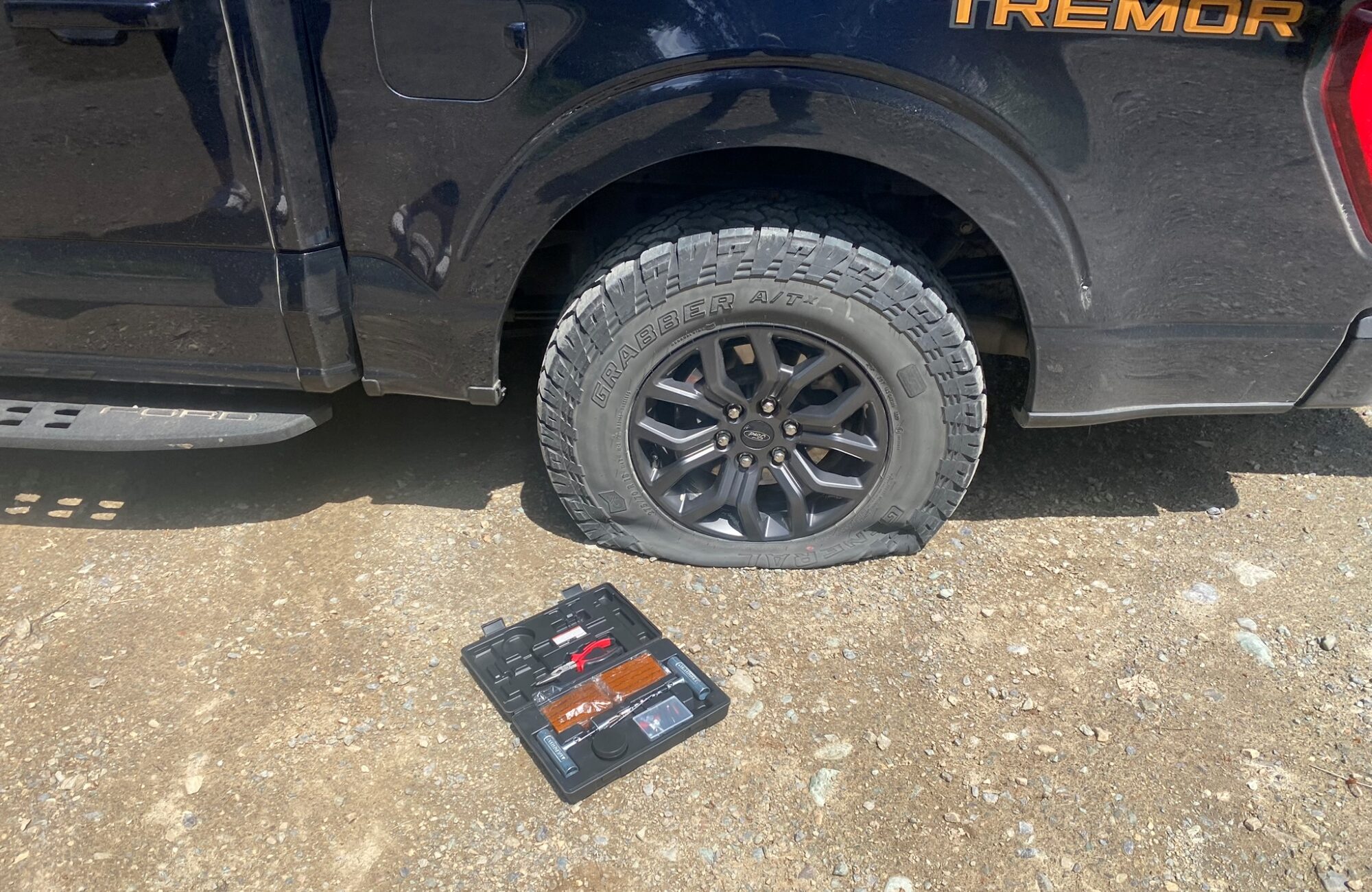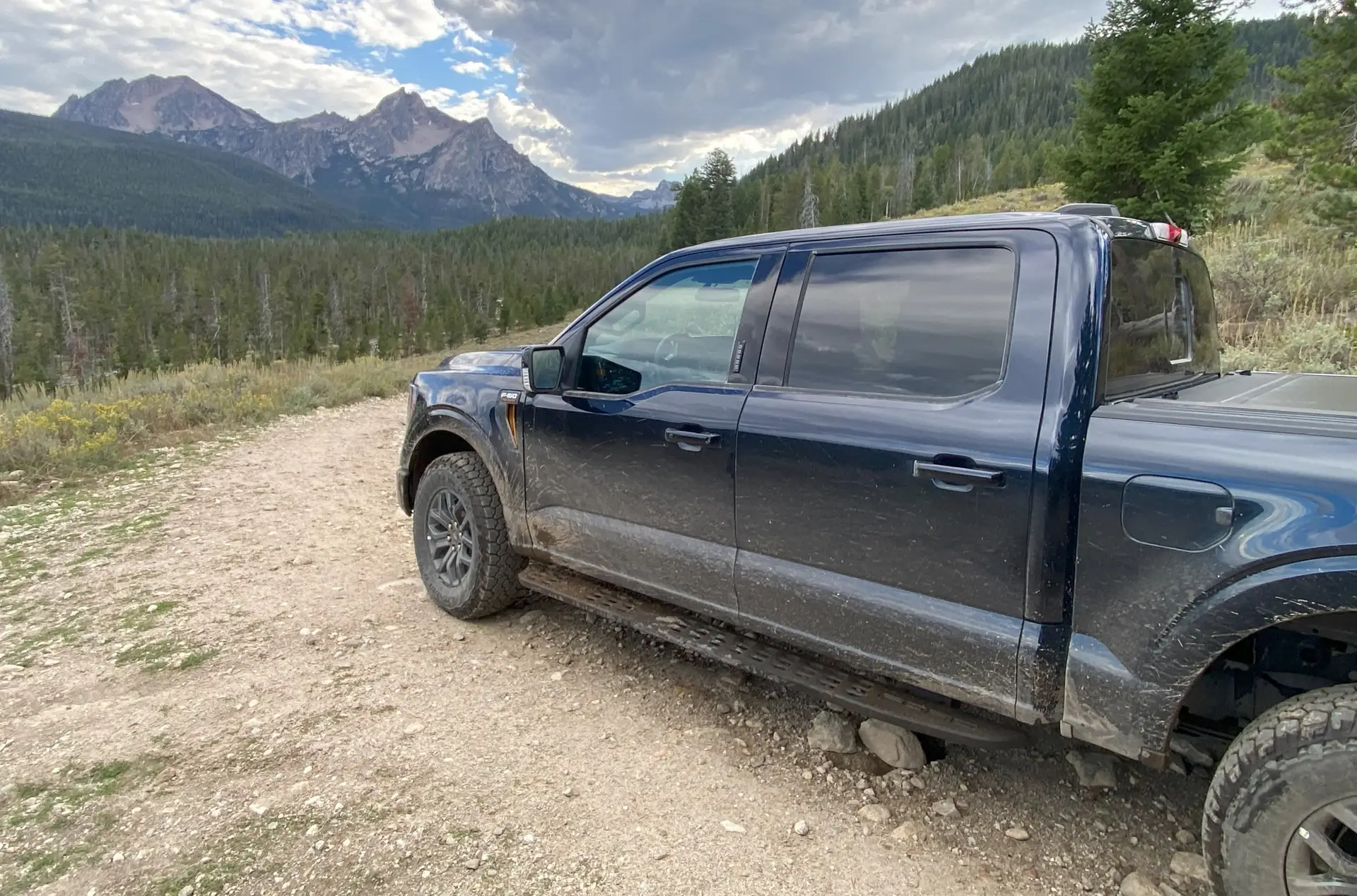
Maximize Your Off-Road Experience: The Importance of Airing Down
For me, the fun of overlanding is getting into areas where most people don’t go. I love to explore places I haven’t been and see what’s around the next corner. To reach these remote areas, you have to leave the pavement behind. Forest service roads and off-road trails can be rocky and rough terrain. You might encounter washboard roads, mud, snow, or rocks. The first thing you should do when turning onto dirt roads is to air down your tires. Here’s why:
Improved Traction
When you reduce your tire pressure, the tire’s footprint—the area that makes contact with the ground—increases. This larger contact patch enhances traction by allowing the tires to grip the terrain better. Whether you’re navigating through mud, sand, rocks, or snow, improved traction helps your vehicle maintain momentum and reduces the risk of getting stuck.
Smoother Ride
Off-road trails are often filled with obstacles like rocks, roots, and uneven terrain. Airing down your tires creates a cushioning effect, allowing the tires to absorb more of the bumps and shocks. This not only provides a smoother ride but also reduces the strain on your vehicle’s suspension system and other components, potentially preventing damage. In my opinion, this is one of the main reasons I air down, especially if I have passengers. The ride is a lot less punishing when my tires are aired down.
Enhanced Control
Lower tire pressure can lead to better vehicle control. The increased flexibility of the tires allows them to conform more closely to the terrain, which helps in maintaining stability. This is particularly beneficial when navigating steep inclines, descents, or side slopes, where maintaining control is critical for safety.
Reduced Tire Damage
Off-roading can be tough on tires, with sharp rocks and rough surfaces posing a risk of punctures and cuts. By airing down your tires, you allow them to flex and conform to the terrain, which can reduce the likelihood of sharp objects penetrating the tire. This flexibility can also help prevent sidewall damage, which is a common issue when driving over rocky terrain.
On a recent overlanding adventure, I was lazy and didn’t feel like airing down. Within a mile of turning onto a forest service road, I had a flat tire. I ran over a sharp rock, and with my tires fully inflated, there wasn’t enough give to avoid a puncture. After that, I decided I will always air down when leaving the pavement.
How to Air Down Your Tires
Airing down your tires is a straightforward process, but it’s essential to do it correctly:
Determine the Ideal Pressure: The optimal tire pressure varies depending on the terrain and your vehicle’s specifications. For my vehicle, I usually air down to 20 psi if I am hauling my camper and 15-17 psi if my truck isn’t loaded. In deep snow I will go down lower than that. You will want to check your tires and take into consideration any load that you are carrying to determine the right PSI.
Use a Tire Deflator: A tire deflator tool allows you to quickly and accurately reduce the air pressure in your tires. These tools are affordable and easy to use, making them a valuable addition to your off-road kit. I use Staun Tyre Deflators, which allow you to pre-set a PSI. Then all you have to do is screw them onto each tire, and they will all deflate to the set PSI. I highly recommend them.
Reinflate Before Returning to Pavement: Remember to reinflate your tires to the recommended pressure before driving on paved roads. Underinflated tires can overheat and wear out faster on the highway. To reinflate, I use the Thor’s Lightning Rapid 4 tire inflation system paired with the Thor’s Lightning Dual air compressor. This system allows me to air up all four tires at the same time, which saves a lot of time when airing back up. It also connects all four tires to each other, allowing them to equalize to the same tire pressure. It’s a great system.
Conclusion
Airing down your tires is a simple yet effective technique that can enhance your off-roading experience. From improved traction and smoother rides to better vehicle control and reduced tire damage, the benefits far outweigh the extra effort. Next time you head off-road, take a few minutes to air down and enjoy a safer, more enjoyable adventure.
Matt Vittal
Matt is a software engineer living in Northwest Montana. He is an avid outdoorsman who spends his free time hiking, backpacking, camping, hunting, and fishing.




